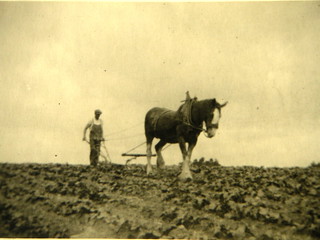Monday, 8 September 2014
Using www.scottishindexes.com to the full
Thursday, 24 July 2014
Beyond the census - Woodhead lead mines, Carsphairn
Name
|
Relationship
|
Condition
|
Age
|
Sex
|
Occupation
|
Birthplace
|
||||||
James Irvine
|
Head
|
Married
|
35
|
M
|
Teacher of English
|
Roxburgh, Ancrum
|
||||||
Ann Irvine
|
Wife
|
Married
|
35
|
F
|
Schoolmistress
|
Roxburgh, Jedburgh
|
Friday, 3 January 2014
Census Mapping
Here's how it works:
Tuesday, 12 November 2013
Their object in coming might be prompted by mere inquisitiveness…
Friday, 8 November 2013
OAP searches in the 1861 census
Here is a letter from the Local Government Board dated 20th June 1913 to The Registrar General, New Register House.
"Sir,
I am directed to thank you for your Memorandum of the 27th ultimo giving the results of references made in the Census Returns of 1861.
With reference to your letter of 10th instant on the general question of the availability of the Census Returns of 1861, the Board note that systematic reference cannot be undertaken for some time. I am, however, to append a further selected list of cases where an early search in the Returns of 1861 would prove most useful, and to say that if you can see your way to cause such a search to be made, the Board will be greatly obliged.
A few pages on in NRS item number GRO5/779 we find the cases mentioned in the letter. I have transcribed four for you to see, there are a number more.
 |
| Click to view larger image |
The search continues...
Tuesday, 27 August 2013
Decreet, Armstrong v Kirk - 2 September 1847
www.maxwellancestry.com
Friday, 24 August 2012
The 1831 census of Jedburgh is now transcribed
Sunday, 20 February 2011
Holywood 1841 census added to the database
Sunday, 1 August 2010
1841 and 1861 Fala and Soutra census now online
Wednesday, 5 May 2010
Use of Maiden Surname in Scotland
I came across this question today on www.rootschat.com:
“Can someone please clarify something for me?
When a woman married in Scotland, did she always retain her m.s. name?”
I thought the answer might be of use to everybody who reads this blog so here it is:
Yes, this can be a little confusing but also helpful when you understand what’s going on.
In Scotland a married woman can legally be known by both her maiden name and her husband’s name. In fact on gravestones it is usually a woman’s maiden name that will appear and it will say something like “wife of John Smith”. This still happens to this day.
In the census it is a little more haphazard, usually she will be listed with her married name but it is not unusual to see a maiden name. The 1841 census can therefore be confusing as there are no relationships listed but then again in most families it is quite obvious.
In our own census indexing project we have indexed these women under both married and maiden name (when it is obvious) to save confusion. We have added an alternative surname column too.
So if you do come across the maiden name in the census it will make it much easier to find a marriage.
Another thing to remember is that if the woman is a widow the chances of her being listed under her maiden name increases dramatically and if you don’t know what to look for these widows can be hard to find. I usually look for her children in the hope she is living with one of them.
Friday, 30 April 2010
Carnwath 1851 census added to site
We have added the 1851 census for Carnwath to our free Scottish census search, this is a new publication which we have just produced. We are not planning to complete all of Lanarkshire by any means, however, that does bring the total of Lanarkshire parishes transcribed by us to eleven. This means that if you are looking for people in rural Lanarkshire our free census search is worth a shot although not as complete as it is for other counties.
Saturday, 3 April 2010
New Feature added to our fee census
We have just added an automatic maiden name search!
Try searching in the 1861 Census for "Elizabeth Grieve" located in the parish of "Roberton".
www.maxwellancestry.com/census
The only result will be Elizabeth G. Beatie, when you click to see the transcription you will see that Grieve was her maiden name. The maiden name has been automatically searched; this should help when researching female relatives especially if you don’t know whom they married! Not all married females have been entered in this way however as time goes on more and more will appear.
If you have evidence for a maiden name (or alternative surname) and you would like us to add it to the census database, please email me.
Tuesday, 27 October 2009
Do you have a few moments to take my survey?
I have created a survey with surveymonkey.com. Basically it’s a way for you to tell me what you think about our new census search service. (www.maxwellancestry.com/census) There are only 10 questions so if you have used our census search since it went online on September the 9th please take a few minutes to complete my survey.
It will hep us improve the site for everybody, thank you in anticipation.









